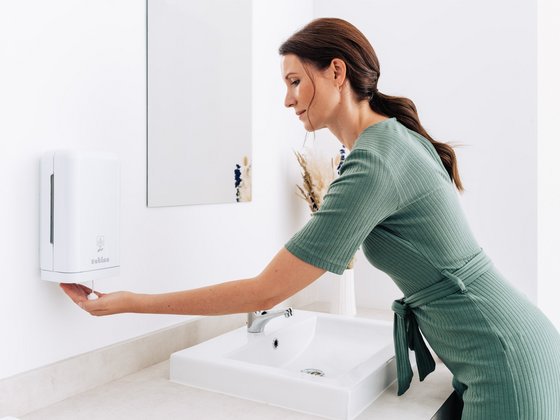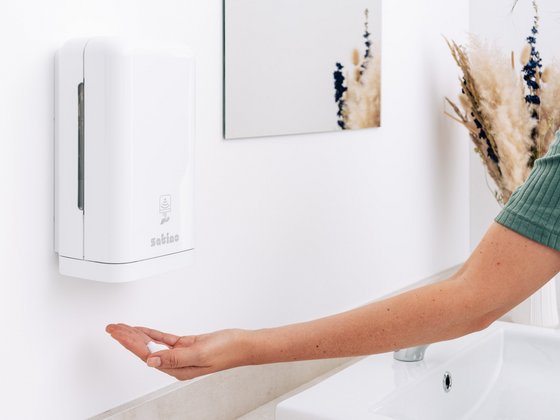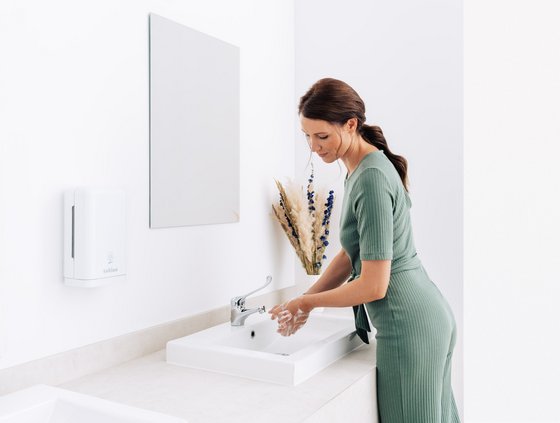A maximum of 19 degrees in offices, unheated corridors, and no lit buildings at night: just some of the measures that Germany will use to save energy, initially for six months and starting in September 2022.
But comfort also being forfeited at washbasins: boilers and instantaneous water heaters may no longer be used at basins for generating hot water unless it is prescribed for "hygienic reasons". However, washing hands is always about hygiene – and doesn't warm water help much better?
How best to wash hands
Washing hands especially warm or even hot is still recommended at many locations today. Scientific surveys have analysed the issue of perfect temperature and have verified that water temperature has no influence at all on the hygienic effect of hand washing. Reducing germs is the same.
The soap products from Satino by WEPA are safe even with cold water and ensure best hand hygiene. They are optimised for cold water thanks to their combination of ingredients which ensure good usability, have a dirt-dissolving effect and care at the same time.
Another factor: using cold water really does save energy, and lower temperatures also effectively prevent skin irritation that can occur with water that is too hot.
Sometimes it has to be hotter
Cold water for washing hands therefore only has advantages. Even detergent manufacturers today recommend 20°C or 30°C. Here though, hot washing above 60°C is recommended every now and again to kill germs. The reason is that such germs multiply optimally at 30°C in the washing machine drum. These are problems that do not apply to the tap – with a few exceptions.
If for example the boiler also supplies the shower, hot water should be rinsed through regularly, because if the tap is not opened regularly, stagnant water exists in the hot water pipe leading to the tap. Pathogens such as legionella multiply very well in this warm, stagnant water. If the shower tap is then opened, water flows back out of the tap pipe due to the pressure drop, and showering is done with contaminated water. This can affect washrooms in hospitals or old people's homes for example – and thus involves people who are particularly susceptible to legionella.
This is not a problem if the boiler only supplies the washbasin. A 15°C water temperature is usually not sufficient for the growth of these germs, which means: switch off for the sake of environment – and without sacrificing hygiene.
Tip: save not just energy, but also water and soap
If you want to save soap and water in addition to energy, you should choose Satino by WEPA foam soap. The reason, and also scientifically proven: because the soap is completely lathered on the hand in the form of foam from the start it is more economical and easier to rinse off than liquid soap, which still needs to be lathered up first.
Conclusion: our soap products are also hygienically safe with cold water. If you or your customers have to do without hot water due to energy-saving measures, Satino by WEPA products allow you to continue offering maximum hygiene safety.
Soaps and foam soaps for perfect hygiene at any water temperature:
Discover our assortment here!



